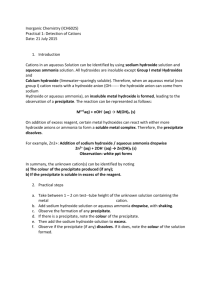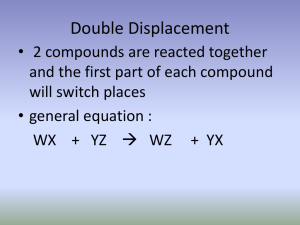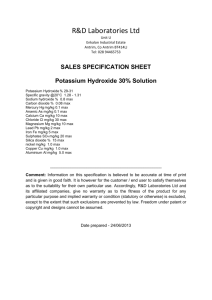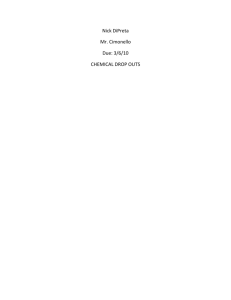Analytical Chemistry (Use of NaOH and NH4OH)
advertisement
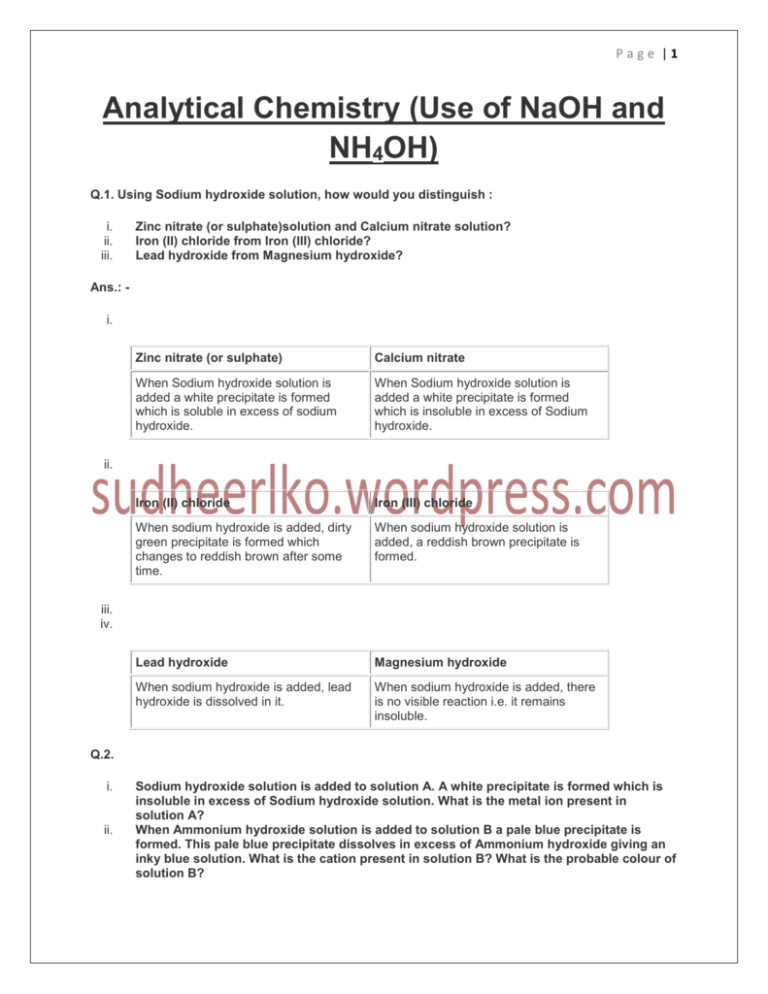
Page |1 Analytical Chemistry (Use of NaOH and NH4OH) Q.1. Using Sodium hydroxide solution, how would you distinguish : i. ii. iii. Zinc nitrate (or sulphate)solution and Calcium nitrate solution? Iron (II) chloride from Iron (III) chloride? Lead hydroxide from Magnesium hydroxide? Ans.: i. Zinc nitrate (or sulphate) Calcium nitrate When Sodium hydroxide solution is added a white precipitate is formed which is soluble in excess of sodium hydroxide. When Sodium hydroxide solution is added a white precipitate is formed which is insoluble in excess of Sodium hydroxide. Iron (II) chloride Iron (III) chloride When sodium hydroxide is added, dirty green precipitate is formed which changes to reddish brown after some time. When sodium hydroxide solution is added, a reddish brown precipitate is formed. Lead hydroxide Magnesium hydroxide When sodium hydroxide is added, lead hydroxide is dissolved in it. When sodium hydroxide is added, there is no visible reaction i.e. it remains insoluble. ii. iii. iv. Q.2. i. ii. Sodium hydroxide solution is added to solution A. A white precipitate is formed which is insoluble in excess of Sodium hydroxide solution. What is the metal ion present in solution A? When Ammonium hydroxide solution is added to solution B a pale blue precipitate is formed. This pale blue precipitate dissolves in excess of Ammonium hydroxide giving an inky blue solution. What is the cation present in solution B? What is the probable colour of solution B? Page |2 Ans.: i. ii. Calcium ion [Ca2+] Copper ion [Cu2+]. The colour of solution ‘B’ is blue. Q.3. You are given the three white powders Calcium carbonate, Lead carbonate and Zinc carbonate. Describe the tests you would carry out in solution to identify the metal in each of the above compounds. Indicate clearly how you would prepare the solutions for the tests. Ans.: Calcium carbonate Lead carbonate Zinc carbonate Calcium carbonate is dissolved in dilute Nitric acid and then Ammonium hydroxide is added to it. No visible reaction is seen. Lead carbonate is dissolved in dilute Nitric acid and then Ammonium hydroxide is added to it. A white precipitate is formed which is insoluble in excess. Zinc carbonate is dissolved in dilute Nitric acid and then Ammonium hydroxide is added to it. A white precipitate is formed which is soluble in excess. Q.4. Write an equation for the following reaction : Copper sulphate solution is added to Sodium hydroxide solution. Ans.: CuSO4 + 2NaOH → Cu(OH)2 + Na2SO4. Q.5. Three test-tubes contain Calcium nitrate solution, Zinc nitrate solution and Lead nitrate solution respectively. Each solution is divided into two portions (i) and (ii). Describe the effect of : i. ii. Adding Sodium hydroxide to each portion in turn till it is in excess. Adding Ammonium hydroxide to each portion in turn till it is in excess. Ans.: i. Sodium Hydroxide Small amount In excess Calcium nitrate White precipitate Insoluble Zinc nitrate White precipitate Soluble Lead nitrate White precipitate Soluble ii. iii. Ammonium Hydroxide Page |3 Small amount In excess Calcium nitrate No visible reaction No change Zinc nitrate White precipitate Soluble Lead nitrate White precipitate Insoluble Q.6. State what do you observe when : Ammonium hydroxide is added to Iron (III) sulphate solution. Ans.: A reddish brown precipitate is formed. Q.7. The following table shows the tests a student performed two aqueous solutions A and B. Write down the observations (i) and (ii) that were made. Test Observation Conclusion (i) To solution A, Sodium hydroxide solution was added. (i) A contains Fe3+ ions (ii) To solution B, Ammonium hydroxide solution was added slowly till in excess. (ii) B contains Cu3+ ions Ans.: i. ii. Reddish brown coloured precipitate is appeared. A pale blue or bluish white precipitate is formed which dissolves in excess of Ammonium hydroxide and give deep blue / intense blue / inky blue solution. Q.8. How would you distinguish between Zn 2+ and Pb2+ using ammonium hydroxide solution? Ans.: Zn2+ Pb2+ On adding NH4OH drop by drop to a solution of Zinc salt a white precipitate is formed which is soluble in excess of NH4OH. On adding NH4OH drop by drop to a solution of lead salt a white precipitate is formed which is insoluble in excess of NH4OH.



